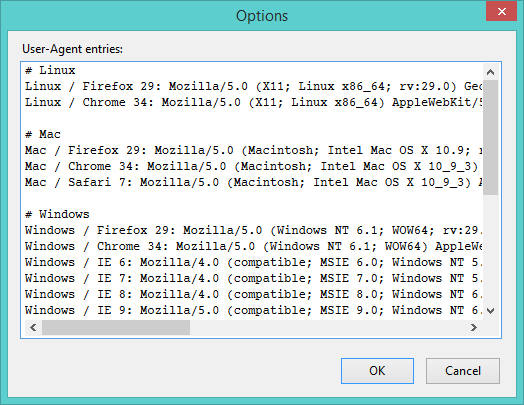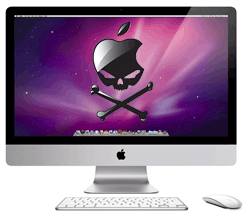A phishing scam has targeted Mac users by redirecting them from legitimate websites to fake websites which tell them that their computer is infected with a virus. The user is then offered Mac Defender 'anti-virus' software to solve the issue.
This 'anti-virus' software is malware (i.e. malicious software). Its ultimate goal is to get the user's credit card information which may be used for fraudulent purposes.
The most common names for this malware are MacDefender, MacProtector and MacSecurity.
Malwarebytes for Mac. Malwarebytes 4 takes out malware, adware, spyware, and other threats before they can infect your machine and ruin your day. It'll keep you safe online and your Mac.
Apple released a free software update (Security Update 2011-003) that will automatically find and remove Mac Defender malware and its known variants.
The Resolution section below also provides step-by-step instructions on how to avoid or manually remove this malware.
- Apple introduced malware detection to the Mac OS with Snow Leopard (Mac OS 10.6). This system consists of the quarantine of any app downloaded from the Internet, the use of Code Signing.
- Mac OS: Use Anti-Malware To Scan And Remove OSX.Trojan.Gen (Recommended) Combo Cleaner is a complete security suite for Mac OS that is developed by ' RCS LT ' company. This program is featured with anti-virus scanner and system optimization tools like disk cleaner, duplicate files finder, application uninstaller, privacy scanner, and 24.7.
Resolution
How to avoid installing this malware
If any notifications about viruses or security software appear, quit Safari or any other browser that you are using. If a normal attempt at quitting the browser doesn't work, then Force Quit the browser.

In some cases, your browser may automatically download and launch the installer for this malicious software. If this happens, cancel the installation process; do not enter your administrator password. Delete the installer immediately using the steps below.
- Go into the Downloads folder, or your preferred download location.
- Drag the installer to the Trash.
- Empty the Trash.
How to remove this malware
If the malware has been installed, we recommend the following actions:
- Do not provide your credit card information under any circumstances.
- Use the Removal Steps below.
Removal steps
- Move or close the Scan Window.
- Go to the Utilities folder in the Applications folder and launch Activity Monitor.
- Choose All Processes from the pop up menu in the upper right corner of the window.
- Under the Process Name column, look for the name of the app and click to select it; common app names include: MacDefender, MacSecurity or MacProtector.
- Click the Quit Process button in the upper left corner of the window and select Quit.
- Quit Activity Monitor application.
- Open the Applications folder.
- Locate the app ex. MacDefender, MacSecurity, MacProtector or other name.
- Drag to Trash, and empty Trash.

In some cases, your browser may automatically download and launch the installer for this malicious software. If this happens, cancel the installation process; do not enter your administrator password. Delete the installer immediately using the steps below.
- Go into the Downloads folder, or your preferred download location.
- Drag the installer to the Trash.
- Empty the Trash.
How to remove this malware
If the malware has been installed, we recommend the following actions:
- Do not provide your credit card information under any circumstances.
- Use the Removal Steps below.
Removal steps
- Move or close the Scan Window.
- Go to the Utilities folder in the Applications folder and launch Activity Monitor.
- Choose All Processes from the pop up menu in the upper right corner of the window.
- Under the Process Name column, look for the name of the app and click to select it; common app names include: MacDefender, MacSecurity or MacProtector.
- Click the Quit Process button in the upper left corner of the window and select Quit.
- Quit Activity Monitor application.
- Open the Applications folder.
- Locate the app ex. MacDefender, MacSecurity, MacProtector or other name.
- Drag to Trash, and empty Trash.
Malware also installs a login item in your account in System Preferences. Removal of the login item is not necessary, but you can remove it by following the steps below.
- Open System Preferences, select Accounts, then Login Items
- Select the name of the app you removed in the steps above ex. MacDefender, MacSecurity, MacProtector
- Click the minus button
Use the steps in the 'How to avoid installing this malware' section above to remove the installer from the download location.
Note: Apple provides security updates for the Mac exclusively through Software Update and the Apple Support Downloads site. User should exercise caution any time they are asked to enter sensitive personal information online.
(Editor's note: This story corrects an earlier report that stated that the Macintosh operating system had become a target of a malicious Trojan Horse.)
Security experts on Friday slammed security firm Intego for exaggerating the threat of what the company identified as the first Trojan for Mac OS X.
Cursors-4u.com gots plenty of for your mouse pointer.We got, cute, animated, cool, sexy, and so much more cursors.You can directly download the cursors for your mouse or web site to your hard drive for free and use them on your desktopcomputer for Windows XP or Windows Vista or Windows 7 or Windows 8 or you can place them on your web site or blog. There have beenmany imitators since but you will not see the quality and quantity likehere at Cursors-4U.com.© 2005-2020 Cursors-4U.com. Naruto shippuuden for mac torrent. You can even get, Xanga, Bebo, Orkut, Wordpress, Myspace and any other social networking profilesite that allows CSS coding, here. Also our cursors work on Internet Explorer, Mozilla Firefox, Safari,and Google Chrome.We were the first cursor site to allow cursor hot linking and cursor download.
On Thursday, Intego issued a press release saying it had found OS X's first Trojan Horse, a piece of malware called MP3Concept or MP3Virus.Gen that appears to be an MP3 file. If double-clicked and launched in the Finder, the Trojan accesses certain system files, the company claimed.
While Intego said the Trojan was benign, it said future versions could be authored to delete files or hijack infected machines. In the release, and in subsequent telephone interviews, Intego was vague about the purported Trojan's workings and its origins.
On Friday, Mac programmers and security experts accused the company of exaggerating the threat to sell its security software.
'They gave the impression that this is a threat, but it isn't,' said Dave Schroeder, a systems engineer with the University of Wisconsin. 'It is a benign proof of concept that was posted to a newsgroup. It isn't in the wild, and can't be spread in the wild. It's a non-issue.'
'They are spreading FUD to sell their software,' said Ryan Kaldari, a programmer from Nashville, Tennessee, referring to the shorthand for fear, uncertainty and doubt.
Rob Rosenberger of Vmyths said he'd seen virus hype many, many times, and if antivirus companies put out alarmist press releases, it's for one of two reasons: 'Either they're delusional or they're trying to own the hysteria,' he said. 'This has been going on for 16 years now.'
Trojan Mac Os
Rachel Keiserman, a tech-support person at Intego, denied on Friday that her company exaggerated the threat or was attempting a publicity stunt. 'It's not a hoax or anything like that.' She declined to comment further and pointed to a press release listing questions and answers, which defended the company's decision to classify the issue as a threat.
Trojan Virus Mac Os X
'While the first versions of this Trojan Horse that Intego has isolated are benign, this technique opens the door to more serious risks,' the company said. 'The exploit that it uses is both insidious and dangerous, and it is our duty as a vendor of Macintosh security solutions to protect our users. We don't believe in waiting until the damage occurs, unlike some of our competitors.'
Technically, the threat isn't a Trojan Horse by the standard definition: It isn't a working piece of malicious code and can't easily be spread to other computers, experts said. Instead, it is a demonstration of a possible threat.
'We're talking about theoreticals here,' said Schroeder. 'It is possible for OS X to be infested with Trojans, viruses and security issues, but until it is, they aren't justified in raising the alarm.'
The demonstration contains a real MP3 file of someone laughing. When launched in jukebox software like iTunes, the MP3 file plays and nothing else happens. But if double-clicked in the Finder, the MP3 file plays and a warning is displayed.
The program can't be spread by e-mail or through a file-sharing network unless it is compressed using software like Aladdin's Stuffit. Failing to compress the MP3 file before sending it renders the software inoperative.
Trojan Mac Os X
The program exploits a vulnerability that goes back to the original Mac operating system: The system allows programs to appear as a file. Programs can have any icons, names or file extension. In other words, users could be tricked into activating a malicious program, thinking they were opening a document, picture or song.
The vulnerability was exploited several times by Trojans authored for previous versions of the Mac OS.
Mac programmer Bo Lindbergh wrote the threat demonstration and posted a link on the comp.sys.mac.programmer.misc newsgroup on March 20. The link leads to a site in Sweden. The file has now been removed. Lindbergh didn't respond to an e-mail requesting comment.
Symantec on Friday said it was aware of the software. 'It is a proof-of-concept Trojan that does affect the Mac platform; however, it is currently not present in the wild,' the company said in a statement. It said it would continue to monitor the situation.
Trojan Virus On Mac
Likewise, Apple spokeswoman Natalie Sequeira said the company was investigating. 'We are aware of the potential issue identified by Intego and are working proactively to investigate it,' she said.
